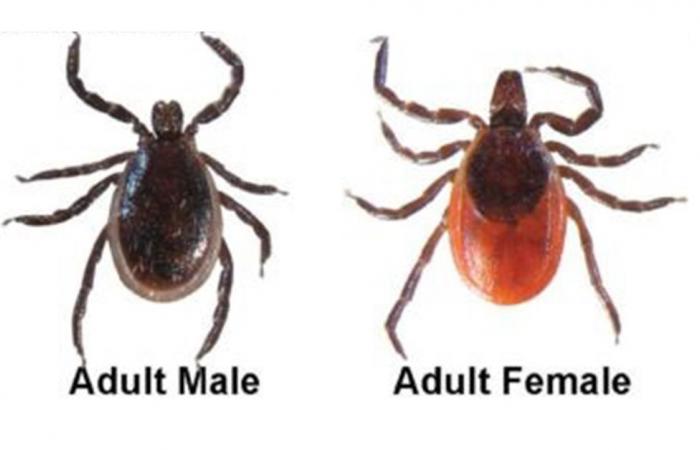provided by Eastern Ontario Health Unit (EOHU)
The Eastern Ontario Health Unit (EOHU) is warning residents that populations of blacklegged ticks, which can spread Lyme disease, Powassan disease and other tick-borne diseases to humans, are increasing in some areas of the five eastern counties. The EOHU region is a known risk area where blacklegged ticks (also known as deer ticks) have been identified and individuals may come into contact with infected ticks.
Lyme disease ticks have been present in the area for several years. Powassan disease was also recently identified in a blacklegged tick in the EOHU area. In addition, anaplasmosis and babesiosis are diseases found in Ontario that can be transmitted by blacklegged ticks. While these diseases are less common than Lyme disease, they can also cause serious illness. Most cases of Lyme disease, anaplasmosis and babesiosis can be successfully treated with medication, but there is currently no treatment for the virus that causes Powassan disease.
“Because of our mild winter, tick season started earlier this year and ticks are already very active,” says Dr. Paul Roumeliotis, Medical Officer of Health with the EOHU. “With the rise in cases of Lyme disease and other tick-borne illnesses in Ontario, it is very important to take precautions to prevent tick bites. I encourage everyone to visit www.eohu.ca/ticks to learn how to protect yourself and the people you care for.” He adds that residents should contact their doctor or pharmacist if they find a tick attached to their skin for at least 24 hours, or if they develop flu-like symptoms or an unusual rash in the days or weeks following a tick bite.
Ticks are most active in the spring and summer, but can be found any time of year when the temperature is above freezing, typically in forests, tall grass, and shrubs in rural and urban areas. There are steps you can take to discourage ticks from around your home and to keep ticks away from you, your family, and your pets.
For more information on how to protect yourself and your loved ones from tick-borne diseases, as well as what to do if you have been bitten by a tick, go to www.bseo.ca/ticks.






